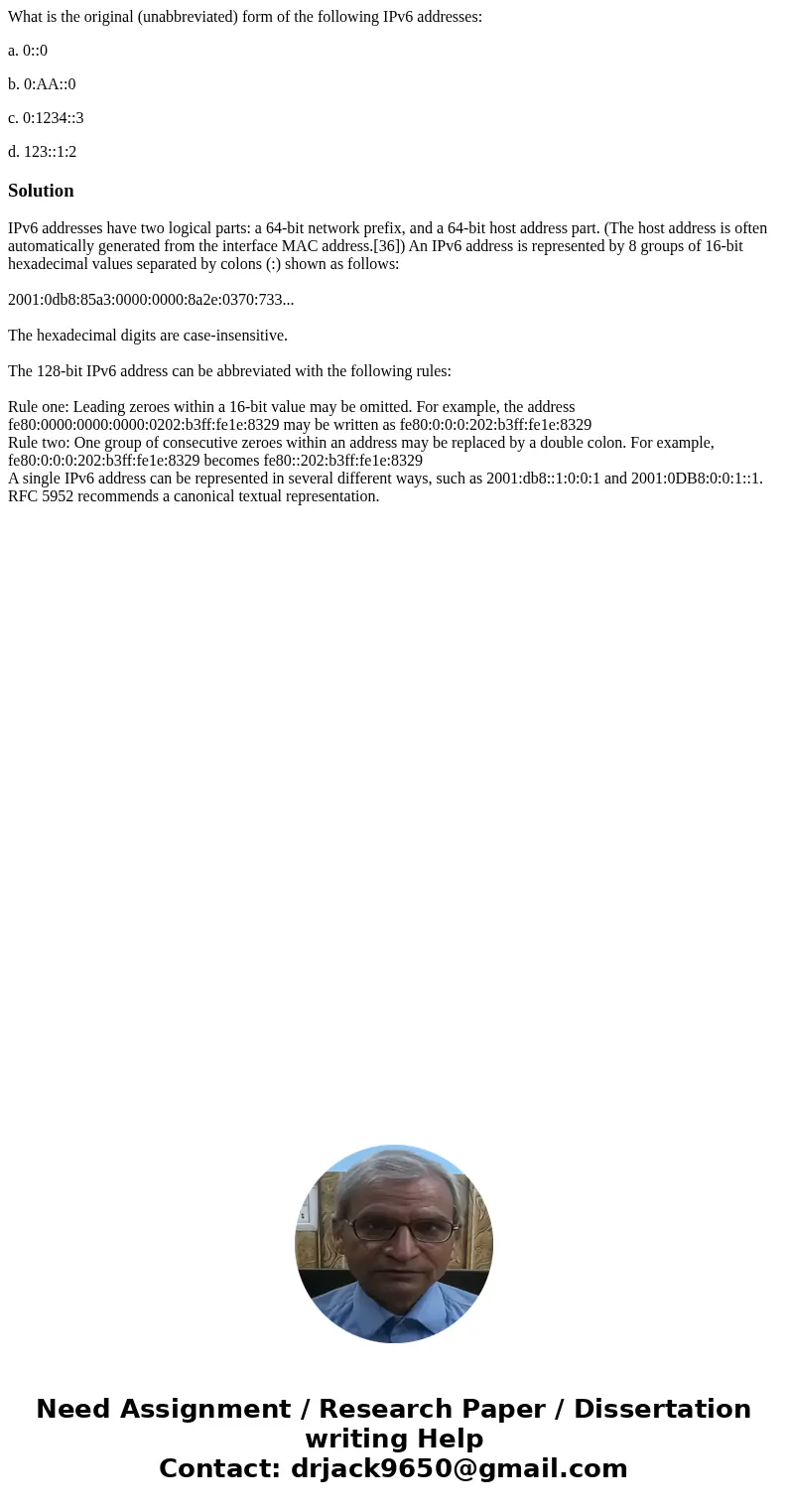What is the original unabbreviated form of the following IPv
What is the original (unabbreviated) form of the following IPv6 addresses:
a. 0::0
b. 0:AA::0
c. 0:1234::3
d. 123::1:2
Solution
IPv6 addresses have two logical parts: a 64-bit network prefix, and a 64-bit host address part. (The host address is often automatically generated from the interface MAC address.[36]) An IPv6 address is represented by 8 groups of 16-bit hexadecimal values separated by colons (:) shown as follows:
2001:0db8:85a3:0000:0000:8a2e:0370:733...
The hexadecimal digits are case-insensitive.
The 128-bit IPv6 address can be abbreviated with the following rules:
Rule one: Leading zeroes within a 16-bit value may be omitted. For example, the address fe80:0000:0000:0000:0202:b3ff:fe1e:8329 may be written as fe80:0:0:0:202:b3ff:fe1e:8329
Rule two: One group of consecutive zeroes within an address may be replaced by a double colon. For example, fe80:0:0:0:202:b3ff:fe1e:8329 becomes fe80::202:b3ff:fe1e:8329
A single IPv6 address can be represented in several different ways, such as 2001:db8::1:0:0:1 and 2001:0DB8:0:0:1::1. RFC 5952 recommends a canonical textual representation.

 Homework Sourse
Homework Sourse